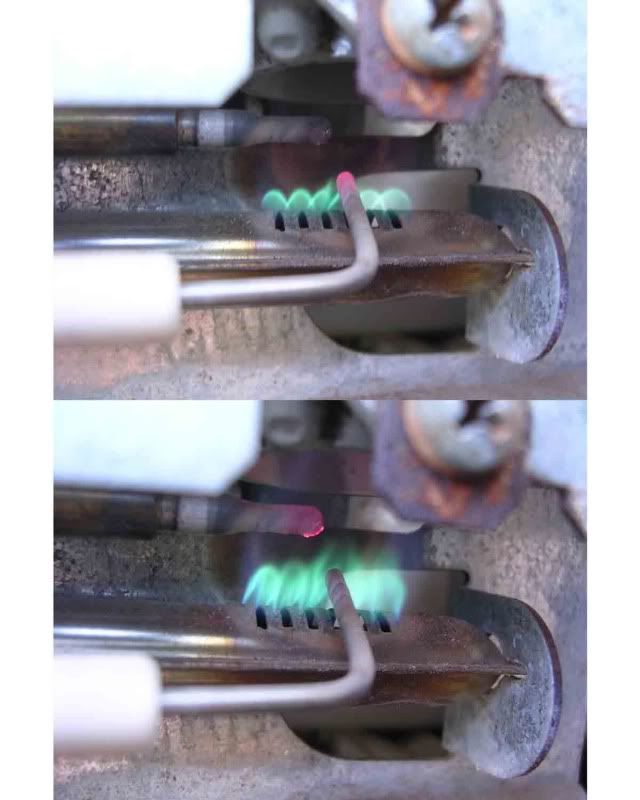1996 Toyota Camry
Timing Belt Diagrams













Drive Belt Diagrams




























 Timing Belt and Sprockets REMOVAL & INSTALLATION 2S-ELC, 3S-FE and 5S-FE Engines
Timing Belt and Sprockets REMOVAL & INSTALLATION 2S-ELC, 3S-FE and 5S-FE Engines- Remove the timing belt covers as previously detailed.
- Raise the engine just enough to remove the weight from the engine mount on the right side.
- Remove the thru-bolt, two nuts, and right hand mounting insulator.
- Remove the retaining bolts and remove the right hand mounting bracket (from the side the alternator was removed from).
- Remove the timing belt and timing belt guide. If the timing belt is to be reused, draw a directional arrow on the timing belt in the direction of engine rotation (clockwise) and place matchmarks on the timing belt and crankshaft gear.
- Remove the bolt retaining the No. 1 idler pulley and tension spring.
- Remove the No. 2 idler pulley.
- Remove the crankshaft timing gear , if it can not be removed by hand, use two flat bladed tools to pry it off. Make sure to position shop rags to prevent damages to the components.
- Remove the nut retaining the oil pump pulley. To install:
- Align the cutouts of the oil pump pulley and shaft, and slide the pulley on. Retain the pulley while tightening the nut to 21 ft. lbs. (28 Nm).
- Align the crankshaft timing pulley set key with the key groove of the crankshaft pulley, then slide the pulley on.
- Install the No. 2 idler pulley with the bolt and tighten to 31 ft. lbs. (42 Nm). Be sure the pulley moves smoothly. NOTE: Remove any oil or water on the idler pulley and keep it clean.
- Temporarily install the No. 1 idler pulley with the retaining bolt. Hint: use a 1.65 inch (42mm) bolt in length. Do not tighten the bolt yet. Install the tension spring. Pry the pulley toward the left as far as it will go, then tighten the bolt.
- Turn the crankshaft until the key groove in the crankshaft timing pulley is facing upward. Install the timing belt on the crankshaft timing, oil pump, No. 2 idler and water pump pulleys. NOTE: If the old timing belt is being reinstalled, make sure the directional arrow is facing in the original direction and that the belt and crankshaft gear matchmarks are properly aligned.
- Install the lower (No. 1) timing belt cover and new gasket with the four bolts.
- Align the crankshaft pulley set key with the pulley key groove. Install the pulley. Tighten the pulley bolt to 80 ft. lbs. (108 Nm).
- On 2S-ELC engines, turn the crankshaft pulley and align the 0 mark on the lower (No. 1) timing belt cover.
- Align the camshaft knock pin with the matchmarks on the oil seal retainer.
- On 2S-ELC/USA engines, align the knock pin with the pin hole on the timing pulley E mark side. On 2S-ELC/Canadian engines, align the knock pin with the pin hole on the timing pulley. On 3S-FE and 5S-FE engines, align the knock pin with the groove of the pulley, and slide the pulley onto the camshaft with the plate washer and set bolt. NOTE: On 2S-ELC engines, make sure that the Matchmark on the oil seal retainer and center hole of the small hole on the camshaft timing pulley are aligned.
- Using the removal tool to hold the pulley stationary, install and tighten the pulley set bolt to 40 ft. lbs. (54 Nm) on the 2S-ELC and the 3S-FE. On the 5S-FE, tighten the set bolt to 27 ft. lbs. (37 Nm).
- On 3S-FE and 5S-FE engines, turn the crankshaft pulley and align the 0 mark on the lower (No. 1) timing belt cover.
- Install the timing belt and check the valve timing as follows:
- Align the matchmarks that you made previously, and install the timing belt onto the camshaft pulley.
- Loosen the No. 1 idler pulley set bolt 1⁄2 turn.
- Turn the crankshaft pulley two complete revolutions TDC to TDC. ALWAYS turn the crankshaft CLOCKWISE. Check that the pulleys are still in alignment with the timing marks.
- Tighten the No. 1 idler pulley set bolt to 31 ft. lbs. (42 Nm).
- Make sure there is belt tension between the crankshaft and camshaft timing pulleys.
- Install the upper (No. 2) timing cover with a new gasket(s). On the 5S-FE, align the two clamps for the engine wiring harness with the cover mounting bolts.
- Install the spark plugs.
- The remainder of installation is the reverse of removal. Tighten each component to specifications.










